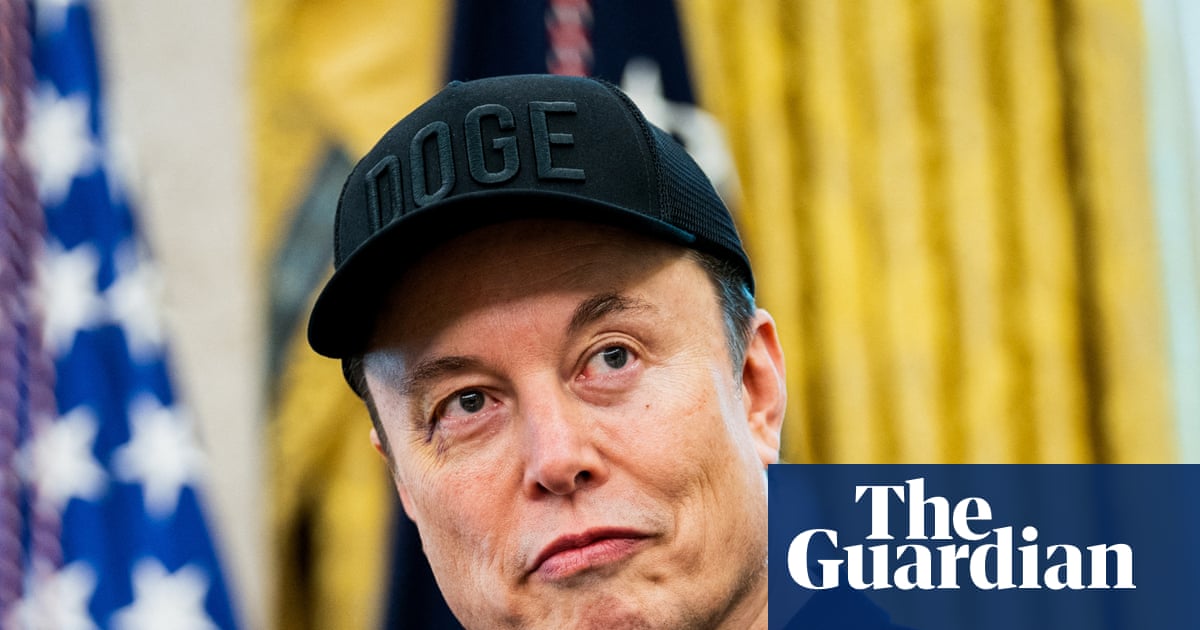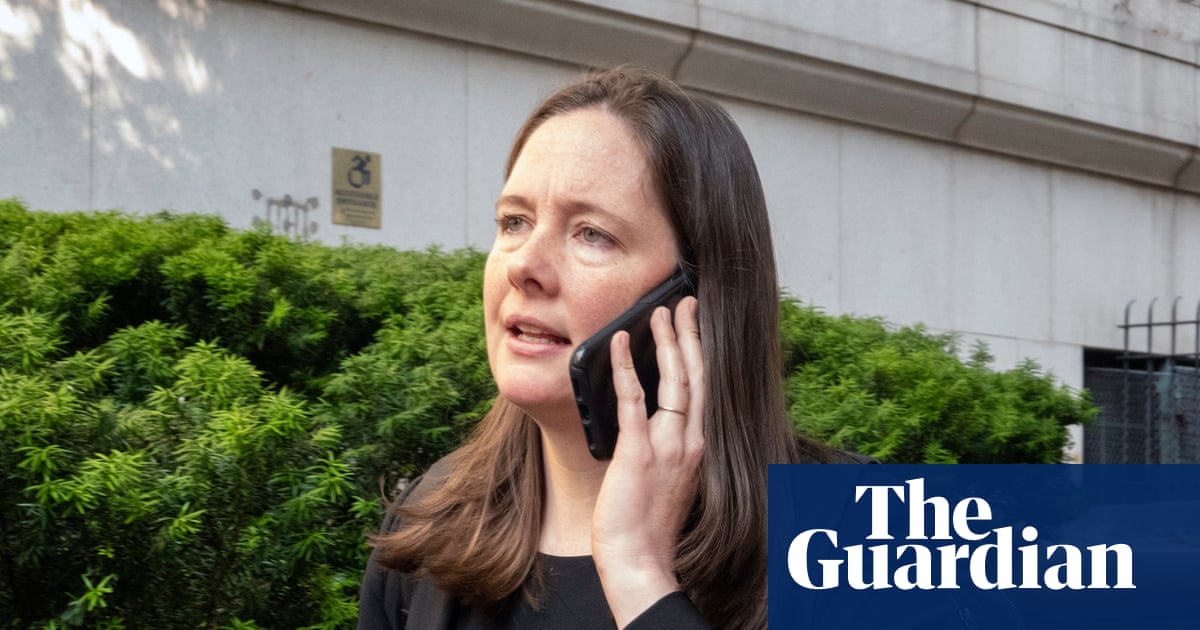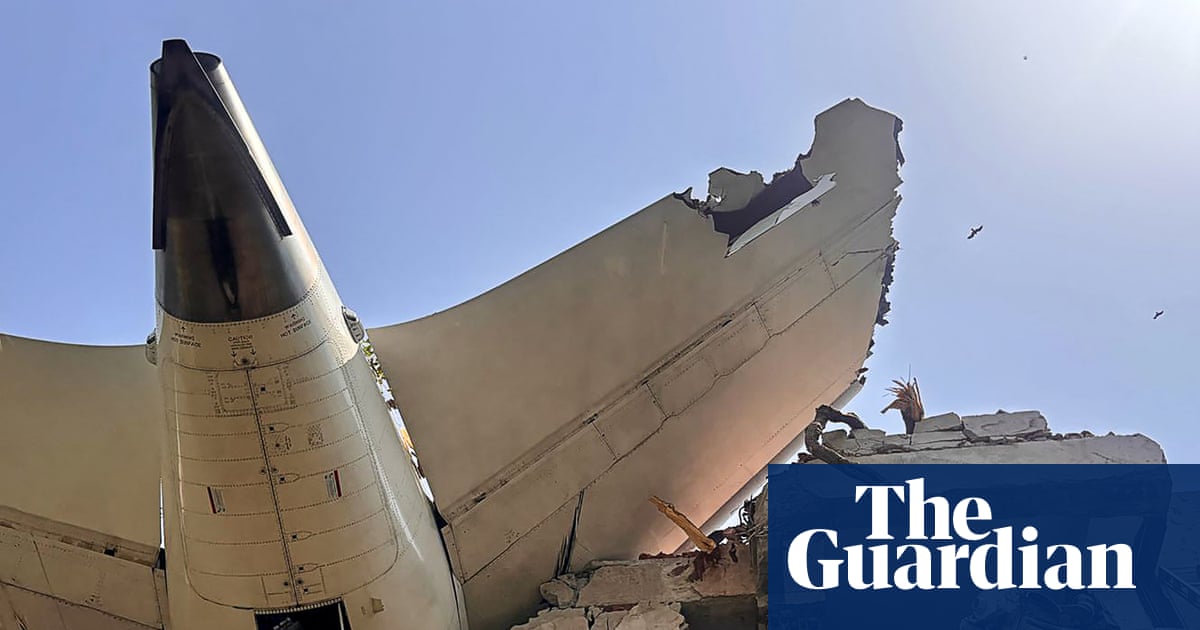The north-west Hawaiian island of Mokumanamana is said to be touched by the gods. Bisected by the Tropic of Cancer latitude line, it is deep in the Pacific Ocean, about 400 miles from Honolulu. The island’s steep rocky cliffs give way to indigo blue waters dotted with monk seals and stony coral. No humans have lived on Mokumanamana, but it has the world’s highest density of ancient Hawaiian religious sites.
“It sits as a boundary between what Native Hawaiians refer to as ‘pō’, the darkness, and ‘au’, the light,” said William Aila, the former chair of Hawaii’s department of land and natural resources. “When a Hawaiian passes, their soul makes its way from wherever it is in the main Hawaiian Islands, up to the North-western Hawaiian Islands. And at that juncture, at pō, they’re met by their ancestors.” As Aila tells it, if a person has been good, they can pass into pō and be with their ancestors, who inhabit the Pacific waters west of Mokumanamana.
The hundreds of miles of ocean that surround Mokumanamana and other Hawaiian islands are now under threat, according to environmentalists and scientists. The Federal Aviation Administration (FAA), the agency that oversees air and space travel in the US, announced in May that it had given Elon Musk permission to detonate rocket ships from his company SpaceX over these protected waters.
SpaceX first brought its request, a proposal called the Starship Super Heavy Project, to the FAA in 2022. In 2023, the company was given a license to launch its massive Starship rocket five times a year. In 2024, Musk proposed quintupling that number to 25 a year. SpaceX’s launch base is located in Boca Chica, Texas, surrounded by a state park and federal wildlife refuge. To date, 10 Starship rockets have attempted to take off from there, the majority of which have ended in scattershot explosions, blasting metal shrapnel and debris from the Gulf of Mexico to the Indian Ocean.
In conjunction with the increased number of launches, Musk proposed expanding the area in the Pacific Ocean where debris from his exploded Starships can land by roughly 75 times its original scope. This new area encompasses vast regions throughout the Pacific, including around the eight main Hawaiian islands, Mokumanamana and the entire north-west Hawaiian chain of islands – which lie within the Papahānaumokuākea marine national monument, a Unesco world heritage site.
The monument is considered one of the most ecologically unique and diverse areas in the world, with 7,000 species of birds, turtles, marine mammals, fish and coral, some of which are critically endangered. It is also the largest protected area on Earth, covering nearly 600,000 sq miles of water. Ancestors of modern Hawaiians explored the open ocean here, navigating by stars. During Joe Biden’s final days in office, his administration designated the monument as a sanctuary, giving it enhanced legal protections.
Once SpaceX ramps up launches, bird and sea life could face hazardous material spills, falling objects and sonic booms, according to thousands of pages of government documents reviewed by the Guardian and interviews with more than a dozen people, including oceanographers, aerospace engineers, former government employees, lawyers and Hawaiian residents. They fear Musk’s “fail fast” approach to rocket launches, along with his ties to the US government, could mean SpaceX will have free rein over the region. Many in Hawaii say the FAA’s review of potential environmental consequences is not thorough enough.
“We, especially as Native Hawaiians who have a special relationship to that place, simply want an honest and true assessment of the risk before consenting to the raining of thousands of pieces of a failed rocket,” said Aila, who is also the former chair of Papahānaumokuākea’s advisory council.
Musk, the world’s richest person, has framed his SpaceX expansion plan as existential, crucial to the survival of the human race. One day in the not-so-distant future, he says, the development of SpaceX’s Starship rocket will culminate in his ultimate goal of colonizing the planet Mars.
Starship is the largest and most powerful spaceship ever built, standing 40 stories tall when all its parts stack. It’s designed to eventually be fully reusable and comes equipped with a Super Heavy booster and engines that burn methane gas and liquid oxygen. Musk originally codenamed it BFR (Big Fucking Rocket).
“Starship is the first design of a rocket that is actually capable of making life multiplanetary,” Musk said in a speech last year. “We don’t want to be one of those lame one-planet civilizations. We want to be a multiplanetary civilization, ultimately be a multi-stellar civilization, be out there among the stars.”
For Musk, the cost of harming the delicate ocean ecosystem is outweighed by the benefits of space exploration.
“If the [Starship] did hit a whale, it’s like, honestly, that whale had it coming, cause the odds are so low,” Musk said in October while campaigning for Donald Trump. “It’s like Final Destination: The Whale Edition. It’s like fate had it in for that whale.”
Musk, SpaceX and the White House did not return requests for comment.
Sonic booms, oil spills and damaged birds’ nests
When a Starship detonates and plunges to the sea, there are three possible outcomes, according to the FAA. First, it could have a hard landing at “terminal velocity”, which would cause the rocket to break apart on impact creating an “explosive event” on the water’s surface. Second, it could have a “soft water landing and tip over and sink”. Or lastly, the rocket could break up during atmosphere re-entry, causing debris to scatter across the ocean.
In the run-up to the FAA’s approval of SpaceX’s 25 launches a year, federal agencies that work with endangered species issued biological opinions on the possible impact of these three scenarios.
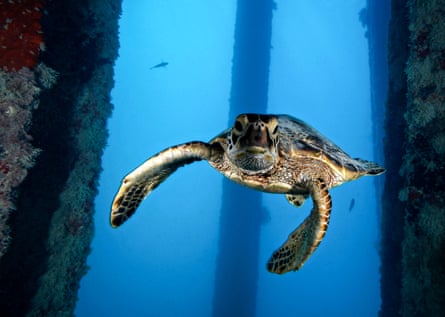
The National Marine Fisheries Service said dozens of species would be “affected”, including various species of whale, turtle, seal, fish, shark, coral and other ocean life. The agency specifically pointed to three types of sea turtle – green, Kemp’s ridley and loggerhead – as being “adversely affected”. Those adverse effects could come from things like sonic booms, falling debris and fuel and oil spills, according to the agency.
In its biological opinion, the Fish and Wildlife Service retraced what went wrong during Starship’s first seven test launches in Boca Chica, Texas. The first launch pulverized the launchpad and sent chunks of concrete flying several miles throughout the wildlife refuge. The second flight went without incident, but the third ignited two brush fires, and the fourth tossed metal sheeting into the surrounding state park and damaged eggs in nine birds’ nests. The following three flights resulted in singed vegetation, a tornado-like “gravel plume” and the carcasses of a black-necked stilt and brown pelican.
Despite the federal agencies’ foreboding assessments, they concluded the impact from twice-monthly Starship launches would probably be rare, and thus “insignificant”. The Fish and Wildlife Service declined to provide further comment. A spokesperson for the National Oceanic and Atmospheric Administration (Noaa), which heads the marine fisheries service, said it recommended conservation measures, like gathering acoustic data on explosions and monitoring falling debris.
The FAA came to the same “no significant impact” conclusion in its final 90-page environmental assessment of SpaceX’s proposal. The agency acknowledged the potential threats but said they would be infrequent and the risk was low. As a result, the FAA approved a five-year license for 25 Starship launches a year and allowed for the vast zone in the Pacific to be a debris “action area”. If rocket detritus falls outside the permitted zone, the FAA or other federal agencies may investigate, though the approval does not delineate specific penalties.
The FAA assessment bears a major caveat, though: it was in effect prepared by SpaceX itself. SpaceX employees and consultants from the firm SWCA, hired by SpaceX, authored the 90-page document, according to its list of preparers. Four FAA employees were listed as “independent evaluators”. A separate 106-page biological assessment the FAA used to evaluate Starship’s impact on endangered species was also prepared by another company hired by SpaceX, the defense contractor ManTech SRS Technologies.
An FAA spokesperson said applicants may prepare environmental assessments (EA) for the agency, and if they do, “the FAA advises and assists the applicant during preparation of the EA and independently evaluates and takes responsibility for the EA before it is published.”
This environmental assessment, which was first published in 2022 and later updated, is the crux of a lawsuit brought against the FAA by a coalition of non-profits. They say the assessment was not sufficient and violates the National Environmental Policy Act. The coalition is calling for the FAA to conduct what’s known as an Environmental Impact Statement, which would require a more rigorous review of SpaceX’s impact to endangered species as well as consultation with Native Hawaiians and other cultural groups.
“These documents were all put together by SpaceX, and then the FAA just sort of signed off on them as its own work,” said Jill Heaps, the senior legal director for the Surfrider Foundation, which is part of the coalition. “It’s the FAA’s duty to take a hard look at the potentially significant impacts to marine life … They’re asking for a very large geographic area in which these pieces can be dumped into the ocean, some of which might be near the Rice’s whale, some of which are near very sensitive areas around Hawaii.”
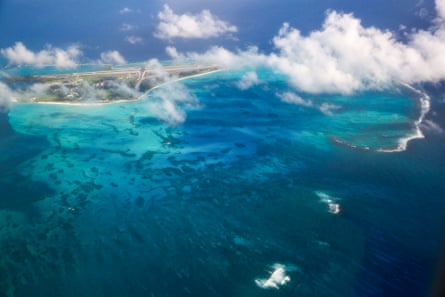
When asked why the FAA didn’t issue an impact statement, the agency spokesperson said the assessment “provides a full discussion of the reasonably foreseeable effects of issuing a license for SpaceX’s proposed operations”.
Rockets are a conglomeration of materials, such as heavy metals, plastics, wiring and chemicals. When one explodes, it typically breaks into several separate pieces, said Ella Atkins, a professor and department head of aerospace and ocean engineering at Virginia Tech. “That includes the shell on the outside, and the fuel tanks and the engines and all of the piping … Whatever fuel that is still remaining that is unburned will come down wherever it is.”
The big stainless steel side panels of the rocket could float for a while and be retrieved before they eventually sink, said Atkins. The denser pieces, like parts of the engine, would immediately plummet to the sea floor. She said all three of the explosive scenarios laid out by the FAA could harm marine life.
Discarding those materials into the water could also have unforeseen consequences, said Britta Baechler, the director of ocean plastics research for the environmental non-profit Ocean Conservancy. Damaging a coral reef could kill not only the coral, but the ecosystem that depends on it, everything from marine mammals and birds to the fish they survive on, she said.
“Throughout history, we’ve looked at the ocean as a dumping ground, like it’s too big to fail, like ‘the solution to pollution is dilution,’” Baechler said. “And that’s really not the case.”
‘Success is uncertain, but entertainment is guaranteed’
SpaceX has an extensive history of scattering rocket ship debris into the ocean. In the early days of the company, it struggled to find permission to launch its rockets. So, in 2005, the company set its sights on a tiny, remote atoll in the Marshall Islands, called Kwajalein.
In the four years SpaceX spent in Kwajalein, the company successfully launched two of its small Falcon 1 rockets for the first time. But it took several failures to get there. The inaugural Falcon 1 launch ended in a blaze with the rocket plummeting into the ocean, showering burning debris across a nearby coral reef. According to an account by Wired published in 2007, the spaceship’s payload barreled through the roof of SpaceX’s own machine shop, and a fuel slick spread offshore. The company said it retrieved 75% of the detonated debris.
Since then, SpaceX has made tremendous strides. It has launched hundreds of Falcon rockets and is now responsible for delivering cargo and crew to and from the International Space Station. The company says it has also sent more than 7,800 Starlink satellites into orbit, more than half of all active satellites in space.
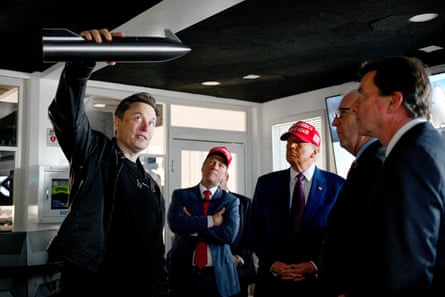
Starship is SpaceX’s new frontier – a rocket built with the goal of making it to Mars – but it’s still a work in progress. The majority of its 10 test flights have encountered fatal errors, with the entire ship engulfed in flames and scant parts left to be reused.
Musk has a “fail fast, learn faster” approach to his companies. As far back as 2005, shortly before SpaceX got set up in Kwajalein Musk said in an interview that, “There’s a silly notion that failure’s not an option at Nasa. Failure is an option here. If things are not failing, you are not innovating enough.”
after newsletter promotion
One spectacular SpaceX failure happened during the first test launch of Starship on 20 April 2023. The colossal spaceship took off from Boca Chica, but quickly suffered engine failure. Just above the Earth, the rocket started to spin out of control, and SpaceX was forced to detonate the ship. The problem started during takeoff, when Starship demolished its launchpad, pulverizing it, sending hunks of concrete flying six miles away.
The blast ignited a grassfire that burned nearly four acres of state park and, from what is known, it destroyed a nest of bobwhite quail eggs and a collection of blue land crabs, according to internal emails Bloomberg obtained from the Fish and Wildlife Service. The loud boom also sent a pair of endangered snowy plovers fleeing, and, while they were gone, a wildlife scientist’s “game camera” caught a coyote eating two of their three nest eggs.
The FAA blamed the failure on “multiple root causes” and cited 63 actions SpaceX needed to implement, including the redesign of Starship’s hardware to prevent leaks and fires as well as the redesign of its launchpad. According to the biography Elon Musk by Walter Isaacson, when SpaceX first built the launchpad in 2020, Musk demanded it not have a flame trench dug underneath the mount, as most pads have.
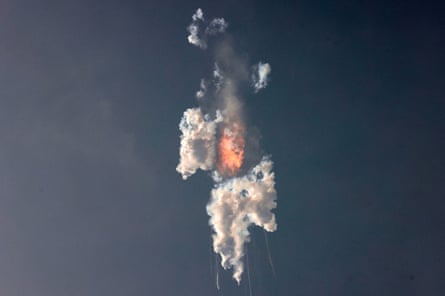
“We don’t want to design to eliminate every risk,” Musk told Isaacson after the episode. “Otherwise, we will never get anywhere.”
In 2025 alone, four more of SpaceX’s Starship rockets exploded. The first, in January, ignited into a fireball that lit up the sky from the Bahamas to Haiti. The FAA needed to reroute dozens of commercial airline flights to avoid falling debris. Afterwards, residents of Turks and Caicos said their islands were littered with spacecraft remains. SpaceX had originally planned a “controlled splashdown” in the Indian Ocean an hour after takeoff, but the explosion happened just nine minutes into Starship’s journey.
“Success is uncertain, but entertainment is guaranteed!” Musk posted to X.
Then, in March, May and June, more Starships exploded.
The May blast ended with heaps of debris, including combustion tanks and metal and plastic fragments, washing up on Playa Bagdad in Matamoros, Mexico – putting in jeopardy thousands of hatchling Kemp’s ridley sea turtles, according to environmental groups. The Mexican president, Claudia Sheinbaum, sent government officials to the beach to survey the damage. Meanwhile, the June Starship went up in flames. Days later, Sheinbaum threatened to sue SpaceX, concluding “there is indeed contamination” on Playa Bagdad.
Billions in government funding and cuts to federal agencies
In mid-January, the FAA held a virtual meeting on Musk’s Starship plan that was open to the public. Texas and Hawaii residents logged on, most of whom were deeply opposed to the project. Lynda Williams, a retired physics professor and activist who lives in Hilo, Hawaii, was the first to speak. She had been trying for months to get word out about Musk’s plans and wrote an op-ed emphasizing the fact that Hawaii residents and officials hadn’t been consulted.
During the meeting, Williams said she focused her comments on the idea that “Earth is not a sacrifice zone for Elon Musk’s ego trip to Mars”. She said she wanted to “shred his [talking point about], you know, ‘we have to extend the light of consciousness and go to fucking Mars’, which is just a whole Trojan-Horse bullshit lie”.
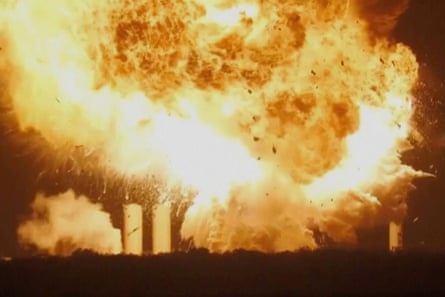
Several meeting participants spoke about the fact that SpaceX is a private commercial company using public resources for profit. The aerospace giant has received billions in government contracts and stands to be awarded much more. The majority of its funding is from Nasa and the Department of Defense. According to a Nasa spokesperson, the agency has invested more than $16bn in SpaceX through numerous contracts.
The FAA also opened a written public comment period, and more than 12,000 comments poured in over a two-month period that ended on 17 January. Comments flowed from south Texas, where residents have lived with rumbling SpaceX launches and their deafening booms for half a decade. “It is terrifying for residents to wake up to what feels like earthquakes,” said one commenter. Another pleaded, “Please stop the destruction of our lands for profit.”
Some people voiced support for the project, including dozens who used the same template to argue that quintupling rocket launches would help in “maintaining American leadership in space relative to global competitors like China”. Several local suppliers also sent identical letters, but using their own letterhead.
Just three days after the FAA closed the comment period on SpaceX’s proposal, Trump was inaugurated president. One of his first official acts was to sign an executive order establishing the so-called “department of government efficiency” (Doge). Trump anointed Musk the de-facto leader – essentially handing him control over the personnel of the federal agencies meant to regulate his businesses.
Michael Whitaker, the FAA chief, stepped down that same day. He had long been in the crosshairs of Musk, especially after the agency fined SpaceX $633,000 last September for allegedly violating its launch license over safety protocols. Musk wrote on X that he was suing the FAA for “regulatory overreach” and that “the fundamental problem is that humanity will forever be confined to Earth unless there is radical reform at the FAA!” Days later, Musk posted Whitaker “needs to resign”.
Since then, with the backing of Trump, Doge has fired hundreds of FAA employees. It has also laid off thousands of scientists with deep cuts to Noaa and the Fish and Wildlife Service, both of which manage Papahānaumokuākea.

The relationship between Trump and Musk has frayed, but Trump has continued to slash funding for environmental projects and attack regulatory bodies that protect the environment. In the Pacific, he has signed executive orders that allow for deep sea mining and open up the Pacific Islands Heritage marine national monument, which is adjacent to Papahānaumokuākea, for commercial fishing.
“The government is doing a number of things trying to reduce the influence and impact of environmental laws,” said Aila, the former chair of Papahānaumokuākea’s advisory council. “Who does that benefit? It benefits Elon Musk. And that should be a huge ethical issue.”
‘The ocean is vast and cannot be avoided’
Ancestors of the Hawaiians pioneered ocean exploration by the stars. But their culture of reverence could not be more different than Musk’s “fail fast” approach to space exploration.
“It’s really easy to portray Indigenous Hawaiian ideals as anti-science, but I don’t think it’s that way at all,” said Kau’inohea Wawae’iole, a college student and resident of Puna, Hawaii, who said he was dismayed when he heard about SpaceX’s plans. “I think it’s just that we have a really deep connection to this place.”
Similarly, when Kyle Kajihiro heard about the waters around Papahānaumokuākea being used as a place to dump rocket debris, he said he was reminded of how the Pacific has been treated for centuries. He’s an assistant professor of ethnic studies at the University of Hawaii at Manoa, whose family originally emigrated from Japan and has lived in Hawaii for five generations.
“There’s a kind of way that the Pacific Ocean, Hawaii and other islands in the Pacific have been imagined by the powerful countries around the world as a kind of empty space,” Kajihiro said. “It’s like it’s this vast ocean with these tiny, remote specs that are insignificant. And so, that smallness and that idea of remoteness and isolation and distance means that the area can be used in this way.”
In the lead-up to the FAA granting approval for SpaceX’s plan, the agency received a deluge of critical letters from local government bureaus, environmental groups and scientists, according to documents reviewed by the Guardian. One of those groups, the Surfrider Foundation, had been focused on SpaceX’s impact in Texas but is now looking at the Pacific too.
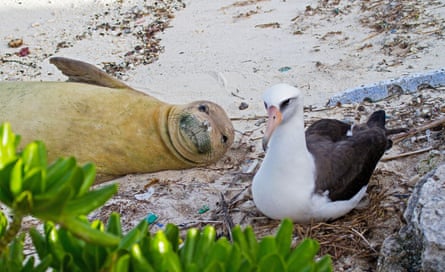
“The [environmental assessment] fails to analyze the impacts of exploding metal rocket pieces or other hazardous materials to sea life, including the ocean water quality, in the vicinity of protected marine habitat, or those that ultimately sink to the sea floor,” Surfrider leaders wrote in their letter, adding that SpaceX has shown no evidence it will avoid areas with endangered species.
In response, the FAA told Surfrider its assessment doesn’t say all potential endangered species habitats would be avoided, “as the ocean is vast and cannot be avoided”.
The FAA did make a concession, however. With its approval in May, the agency adjusted some of the boundaries where Starship debris is allowed to fall near the main Hawaiian Islands. It also added a 50-mile buffer zone around Papahānaumokuākea. The FAA said it made these revisions based on the outpouring of comments about harm to marine life and Hawaiian cultural resources, like the cluster of ancient religious sites on Mokumanamana.
Kajihiro said that even though there are now boundaries around these sacred areas, he’s still concerned that Starship rockets could malfunction and debris will fall there.
“They just see this as empty space,” Kajihiro reiterated. “But what Native Hawaiians have helped us to understand, and what other Pacific Island peoples in their history have understood, is that the ocean is really a fabric of connection between all of these civilizations.”

 7 hours ago
4
7 hours ago
4








